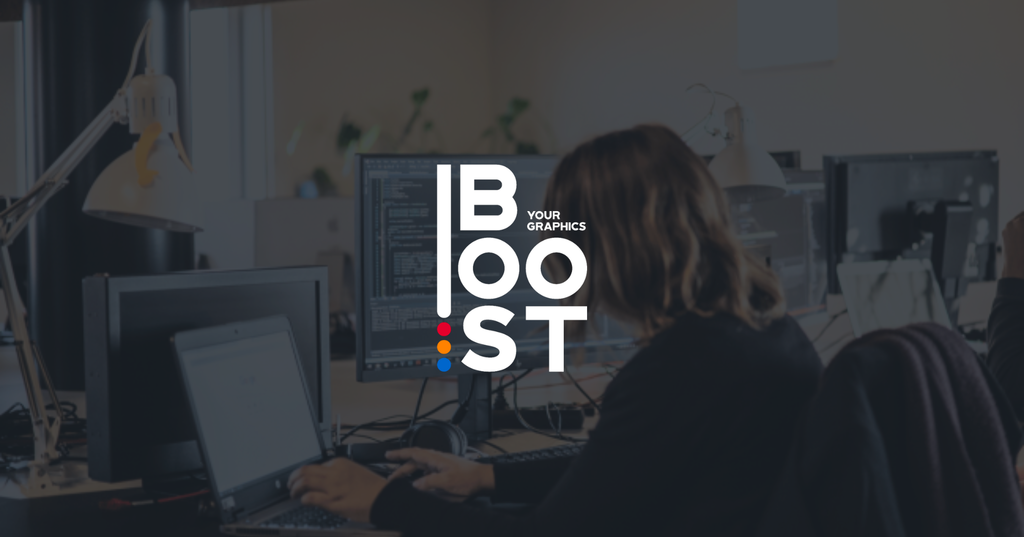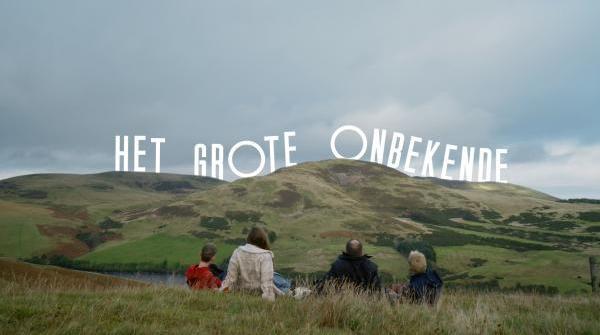Your web browser is out of date. Update your browser for more security, speed and the best experience on this site.

Boost Graphics
They have 25 employees in Belgium, but because of the size they run they only have competitors on an international level. They have now been in existence for 6 years and carry out assignments for VRT and VTM, among others. Boost Graphics, grown out of EMG's desire to offer a complete service, is doing well. Think live graphics, augmented reality, motion & (set) design.
We spoke with Frank Temmerman, department head at Boost Graphics. For two years now, he has managed six departments: graphic, creative, motion, technical motion, development and life.
Hello, Frank. Can you tell us what Boost Graphics does?
Boost Graphics is part of EMG Belgium. We are the graphics department of EMG, so we make sure everything is graphics. That's why we have different departments. We really provide everything from broadcast graphics, to special effects to print. All those disciplines are with us. That means you see a very distinct mix of both creative, technical and creative-technical people walking around with us.
What projects are you currently working on?
In terms of scope, turnover and size, the Tour de France remains hugely important. We also did a complete re-branding of Play Sports, a paying sports channel, for which we also created a virtual set extension to the studio in such a way that all the facilities are hidden and it forms an additional graphic element.

Are your assignments mainly within the sports sector?
We have other clients as well: our motion-design department (the creative people) develops visual identities for broadcasters and their programs. The most recent project is "De dag van vandaag," a quiz presented by Bart Cannaerts. We designed the logo and determined which graphics came in the screens and how they looked. We did the same for 'The 80s for teenagers' with Steven Van Herreweghe and 'The great unknown' with Luk Haekens. We work with the client and ask them how they would like the program to be graphically framed, what the identity of the program is.
How do you see innovation within Boost Graphics?
When watching certain broadcasts, we regularly pause to think about whether we are missing something. We are always striving to do even better. How can we get started faster, cheaper and more productive. We also look at what the competition is doing. We try to abuse things in the sense of: this serves for that but we're going to try to use it for x as well. We want to be one step ahead of the competition so that at the end of the contract the customer has no choice but to say they would resolutely choose us again. We try to stay as current as possible. We are also working on innovation projects linked to the University of Ghent related to image analysis.
What struck me is that the consultants you offered settled in very quickly. One week they were "ready to go" and more than just executives. They thought along and were very valuable.
How did the collaboration with Axxes start?
I was looking for external help for development because we had a lot of work to do. If the deadline doesn't move and the scope widens, you look for reinforcements.
Where could you use extra manpower?
You Axxes people worked on two projects: the cycling app and Team Radio. The cycling app consists of several components and we use it to display graphs with interesting data during the race. This gives viewers more info about the rider's climbing rate and speed, but also e.g. the location they are passing.
Team Radio was a new project of our client Amaury Sport Organization (A.S.O) that went on air during the 2022 Tour de France Femmes. This tool your consultants created from scratch (both back-end and all the logic and data collected).
A.S.O is the umbrella organization responsible for the production of the Tour de France, Paris-Roubaix, Dakkar, the Arctic race in Norway, among others.... They have been our customer for three years.
Can you describe the Team Radio process from behind the scenes to what we as viewers see on the screen?
The project is similar to when you watch Formula 1 and hear the communication between the driver and their team. In our case, it works the same way. We record the communication between the team cars and the driver, and if we were to do that for cyclists as well, for example, we would record 23 channels of audio. We do this for all teams, and it's all stored. All those conversations are translated, transcribed, and then read. Each editor monitors 4 to 5 channels. If the editors find something interesting to show on air, then that particular clip is made. It's then decided hierarchically whether it's actually interesting enough to broadcast and whether showing it wouldn't disrupt the race's progression. If we were to show some information, like communication between the rider and their team, too early, we would give away a team's strategy. Then the viewer hears the selected audio clip with a visual graph representing the audio.
How fast does all of this happen?
It can't be too real-time because of the aforementioned risk, but in principle, it's real-time. It's provided from 30 seconds to an hour after the conversation took place.
It is very valuable to me when someone says that something can be done in a better way. Especially when you hire someone with the title 'consultant', I don't just expect an executioner. It is also important to feel that they are part of the company.
Which roles were filled by Axxes?
Mainly developers and a few who also satisfactorily took on the role of scrum master. What struck me is that the consultants you provided quickly integrated themselves into the team. Within a week, they were 'ready to go' and more than just executioners. They contributed ideas and were very valuable. It's pleasant to work with them. Our former head of development, Thomas, had himself replaced by Tim a few times. So, there were two ways of approaching things, but it worked very well. They both contributed perfectly in their own ways. I only hear a lot of goodwill and satisfaction.
What technology stack are we talking about then?
Back-end in .NET Core 3.1 and front-end in WPF like the other in-house tools.
What do you find important when hiring consultants?
My biggest concern is always how quickly they adapt to the project. So, my expectation is that the people hired integrate into the project as quickly as possible. I'm not a micromanager, and I don't like it either. I hope that they think along, help out, and not just execute tasks. I also appreciate it when people flag issues they see. It's very valuable to me when someone says that something can be done in a better way. Especially when you hire someone with the title 'consultant', I don't just expect executioners. It's also important to feel that they are part of the company. These expectations were definitely fulfilled by the consultants from Axxes. When necessary, we will happily call on your services again.
Photo credits: Boost Graphics
Curious about other software development cases?
Check out the reference case of Publisher VAN IN here.
